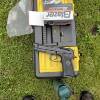Dave Markowitz
Member
The notion of not cleaning the bore of a .22 barrels dates back decades. It has a couple bases in fact:
1. The rifling in the small diameter bore is relatively easy to damage and excessive use of a cleaning rod will cause unnecessary wear.
2. The point of impact may vary if the bore doesn't have one or more fouling shots through it. This is important in match shooting if the opportunity to fire fouling shots isn't there. It could also affect small game hunting, depending on how different the POI is on a clean bore.
Additionally, .22 LR ammo is often lubricated with a waxy compound. This leaves a protective coating in the bore that prevents rust.
I generally do not clean the bore on a .22 LR gun after shooting it for these reasons. None of my guns has suffered for that.
What I do recommend, especially with semiautos, is to clean the bolt face and pay special attention to the extractor hook. Also, clean the chamber if you can with oil or solvent on a Q-tip if it's reachable. I also make sure that semiautos are well lubricated. They can function fine with a lot of fouling if there's plenty of lube to dissolve and carry away fouling.
This works for me. YMMV depending on the gun, ammo, and environment.
1. The rifling in the small diameter bore is relatively easy to damage and excessive use of a cleaning rod will cause unnecessary wear.
2. The point of impact may vary if the bore doesn't have one or more fouling shots through it. This is important in match shooting if the opportunity to fire fouling shots isn't there. It could also affect small game hunting, depending on how different the POI is on a clean bore.
Additionally, .22 LR ammo is often lubricated with a waxy compound. This leaves a protective coating in the bore that prevents rust.
I generally do not clean the bore on a .22 LR gun after shooting it for these reasons. None of my guns has suffered for that.
What I do recommend, especially with semiautos, is to clean the bolt face and pay special attention to the extractor hook. Also, clean the chamber if you can with oil or solvent on a Q-tip if it's reachable. I also make sure that semiautos are well lubricated. They can function fine with a lot of fouling if there's plenty of lube to dissolve and carry away fouling.
This works for me. YMMV depending on the gun, ammo, and environment.


